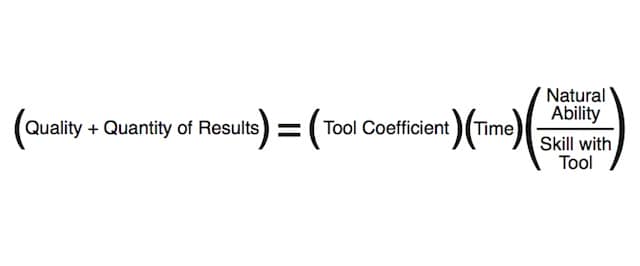I got the program for a state AIA Convention in the mail recently. I scanned through it and closely read the descriptions of all the seminars involving BIM. There was one focusing on measuring the ROI of BIM. Which is a great topic. But one of the two speakers is a reseller. I don’t know about you, but that makes me a little uneasy. Do we want to hear about ROI from the perspective of someone who sells the software? I’d rather hear from someone who uses it. I worry that someone who sells for a particular company might miss the bigger BIM landscape (seeing it primarily through the lens of software rather than process). Can a reseller be trusted to tell you why BIM might lose you money? Or how not all the products are a good fit for you? Or how BIM is really a design tool? Maybe I’m overreacting; we all know that software costs are just one piece of the puzzle. There is so much more to it. Like people. Yeah…come to think of it. If your BIM software costs you $5,000 or $7,000 to start and then another $700 or $1,000 a year, that’s still small potatoes next to training, support, salaries, and non-monetary investment in people. Because it’s really about people, right?
To be fair, my fears and frustrations are a bit theoretical. I know both the reseller and the other speaker giving the ROI talk. I actually think the reseller will do a good (albeit biased) job. But still…who’s controlling the message here: architects, engineers, contractors, or software companies?
“Once the time limit is up, a winner will be selected…”
There is another seminar at this particular AIA Convention which actually annoys me. A lot. There is no way it’s not going to send the wrong message. This seminar is focused on comparing four tools in a two-hour head-to head competition. Each competitor will use their chosen tool to embellish a given building plan and design brief, ending with a rendered view. The tools are: Hand Drawing, SketchUp, Rhino, and Revit. A nice selection of options, right? Could be an interesting competition, right? Wrong. The tools don’t matter. And here’s why. Let me briefly introduce the Competitors; I’ll leave names out of it:
Intern
2 years of experience and a Bachelors of Science in Architecture
Intern
2 years of experience and a Masters in Architecture
Designer
15 years of experience (and no online presence so I can’t tell you his educational background)
Licensed Architect and Design principal
25 years of experience and a Masters in Architecture
If we were making a bet, without knowing who’s using which tool, where would you put your money? Would you place your money on a particular tool winning or a particular person? In what scenario does the guy with 25 years of experience lose to the intern with two years? Tools are a force multiplier, but come on. This grouping of people makes the event worthless. If, like many of our Revit vs ArchiCAD debates, it were more about showing the what and how of the tools rather than crowning a champion, it’d have some merit. But it seems pretty obvious that this competition is subtly engineered to promote the myth of the pencil, the amazing ease of Sketchup, the esoteric qualities of Rhino and the cumbersomeness of Revit. Which is (let’s all say it out loud together): BULLSHIT.
- Comparisons are only valuable if they teach us something about our own processes.
- Competitors should have similar experience in the profession and with their preferred tool.
- Get scientific. Tainted data is garbage. Anyone who has opened a BIM file and seen a bunch of 2D patches, disconnected views, and manual schedules knows the truth of that.
- To really mix things up: have the competitors use the tool that they are least familiar with.
When Tools Don’t Matter
What do you think will be the driving factor here: Tool or Experience?
I’ve shared this equation before. It’s from a post about comparing CAD, BIM and the pencil while controlling for time, skill, and ability. The trickiest part about comparisons-whether it’s pencil vs BIM or ArchiCAD vs Revit-is that what most often controls the equation is natural ability and skill with the tool. John Henry beat the steam powered hammer because he was the best steel-driving man, and his opponent was a fairly new technology. His ability and skill trumped whatever advantages the machine had. But…against a lesser man, or a year or two later when the steam powered hammer got a little better…this legend would tell a different story.
Is it a man vs a machine or mankind vs all machines?
If you have two people showing off what a tool can do, if one is better at their tool, it might not matter which tool is inherently more powerful. As you can probably guess, another way to look at the Ability/Skill variables in my equation is to shorthand it to Experience. Whether that means being more experienced with technical skills or more experienced with expressing natural ability, the experience of a competitor can make all the difference. Therefore a competition between twenty-five years, fifteen-years, and two years of experience is kind of a joke.
It’s a Man vs a Man
All this talk of experience being the controlling factor brings us back to people. As I’ve stated over and over again tools are force multipliers. They take what you have and give you the power to do more. The proper tools free us to do so much more (remember you can’t run 200 MPH but you can go that fast in a Ferrari). Unfortunately the architecture profession suffers from a self-perpetuating anti-technology cult. Our educators, our practicing elites, and our historical heroes all reinforce this myth. We see our heroes and put more weight on what they used rather than how long they used it. We forget that there are no shortcuts. All solutions take time. We confuse our self-worth and the value of our profession with the wrong things.
Excellence in architecture is gained overtime. It is not a profession of singular prodigal genius. Our pantheon is not full of amazing designers under twenty-five. As a quick validation of this view, pause for a moment and think about all the architectural greats. How many were late bloomers as opposed to young gun upstarts?
We keep preventing the existence of the architect with 25 years of BIM who also focuses on design-and education and firm leadership. Instead increased experience with advanced tools often marginalizes these architects and pushes them outside the central discussions, outside the realm of those listened to and praised for expressing both the essence and future of the profession. These architects sit on the fringe, sometimes invited but rarely seen as an equal. Those of us with an interest in the intersection between architecture and technology often make things worse for ourselves. We let the conversation about BIM and technology get out of balance.
It’s time to end this post for now. But I want to add one more point that will be explored endless in other posts. The discussion of experience trumping all else does not mean that tools and processes don’t matter. Quite the opposite actually.
We know what an architect with 50 years of experience designing with analog tools can do. We have no clue what an architect with 50 years of experience designing with digital tools can do. And that is even ignoring the network effect of how design really happens: within teams.
But those are topics for another time.
It’s time to bring these conversations and questions to a larger audience. We need this discussed in our schools and in our firms. But there’s another problem that is stopping us. I’ll tell you about that later this week. Subscribe to my blog to read more about the future of BIM and the tricky world of being an Architect in the 21st century: Shoegnome on Facebook, Twitter, and RSS feed. And now you can join the LinkedIN group too!



11 thoughts on “How NOT to talk about BIM: losing control of the message”
I did a similar competition to demonstrate Revit is quicker than cad in documenting a joinery item. I got a architectural bim expert and a interior designer cad expert document a joinery piece as much as they can in 1 hour from scratch. Revit took the honours.
Of course, Jasper …
The only problem is, you have to keep proving that. I am on the job for 18 years, still not there … Lucky you, Revit is around only 13 years 😀
The inertia of the profession(s) that build the environment is astounding and scary at the same time.
Actually the ID team was sold on it and the next step was to find an appropriate project for them to work on which took a while. 😀
To drive a Ferrari 200mph you have to know how. If you just passed you driving test, the destination is most likely a ditch – unless you are a racing driver from a young age.
And you make a valid point – experienced BIM practitioners, including myself, and let’s also mention Zolna Murray too, often hit a wall of “whaddaya mean you are doing this for 15 years, it just came out yesterday!”
It is still considered “lowly” to be tool proficient, and it’s assumed that you are therefore not profesionally proficient – and that is not only wrong, it is insulting. BIM does not support the category known as “CAD jockey” where the tool proficiency is everything, while the professional level is low at best. A lot of damage can be and is done by the people who know “modeling” but have no clue WHAT are they modeling and WHY.
The devil is in the details … as always
and as always I can’t agree more!
The Ferrari analogy really does cover it all. Tool + experience = 200 MPH. Just tool or just experience = not so fast…
And haven’t you been at this a bit longer than 15 years now??? 😉
Well, 18 this August, to be precise … since I started on ArchiCAD. But, I could say that even before that I have worked with the 3D architectural extensions of AutoCAD – AEC Architectural on AutoCAD 10, 11 and 12, later to become Architectural Desktop and then AutoCAD Architecture (I think, correct me if I am wrong). Heck, I even tried to do models with Vu3D on 48K Sinclair Spectrum in the early 80s!
We did a resort project in 1990, full 3D (each unit floor was XReffed into the unit that was XReffed into the master file with the very steep terrain and the road that wound through) that the documentation was derived from (pra BIM) and some areas … the machines were 486s that had 4MB RAM, the project was 28MB in size … don’t ask 😀 Exercise in patience, almost a Zen experience.
15 was a reference to how long there was a minimal mass to discuss the isses with … the first years were rather lonely.
Dinosaur … 😀
I like your equetion. In relation to that I would like to share a post I recently made on a Dutch linked-in discussion. It was a job post asking for a “BIM-expert”. There were some posts discussing what a BIM-expert was, and what kind of experience they were asking for. Reading this I realized a BIM expert doesn’t exist. If you look at it this way BIM = Building engineer – Information Manager – Moddeler. Nobody is an expert in all these fields, but if you have a fare amount of experience in all 3 of them you can create a good BIM.
In this case they were probably asking for a biM- expert.
Pingback: The Architect's Greatest Fear: The Usurper » Shoegnome
Pingback: Creation, Movement, and Revision: Simple Architecture Tool tests
Pingback: Blacksmith, Telephone Operator, Architect » Shoegnome
Pingback: You graduated from Architecture School and want to be called Architect